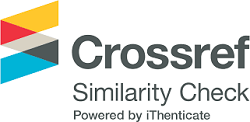Influential Features Analysis And AI-Driven Accuracy Enhancement: A Study Case For DDoS Detection
Abstract
Cybersecurity is known today as one of the greatest challenges of the modern era. Among the various types of cyber attacks that threaten our security, the Distributed Denial of Service (DDoS) attack is among some of the most common, effective, and well-recognized attack strategies. Since this form of attack is meant to disrupt the availability factor covertly, it can be detrimental to the targeted machines and difficult to be discovered. Because of that, there have been a number of approaches, as well as solutions that have been devised in order to detect it as accurately and efficiently as possible. Impressively, data mining methods have been employed to identify patterns of DDoS attacks from the computer network traffic. Nevertheless, the recent works’ results have not yet mentioned which factors of the computer network traffic play the most vital role in indicating the potential for true positive attacks. Additionally, with the Machine Learning approach, there are still ample opportunities to enhance the attack prediction accuracy of the detection model. As such, in this paper, we attempt to explore factors that would influence the classification result, and leverage a variety of Machine Learning algorithms, i.e. Random Forest, Naive Bayes, Logistic Regression, and Multilayer Perceptron, for the purpose of improving the accuracy of data classification. The experiments were deployed using CICIDS2017 dataset and compared with the other related works on the same dataset. The experimental outcomes of our methodologies and analyses demonstrate some potential and effectiveness enhancement compared to previous works. Moreover, we analysized and concluded the insight of how side factors affect the attack identification result. The collected information from our analysis identifies dominant factors, and opens a new view for their hidden correlationship directly affecting the attack labeling.
Keywords
Full Text:
PDFTime cited: 0
DOI: http://dx.doi.org/10.55579/jaec.202484.466
Refbacks
- There are currently no refbacks.
Copyright (c) 2024 Journal of Advanced Engineering and Computation

This work is licensed under a Creative Commons Attribution 4.0 International License.










